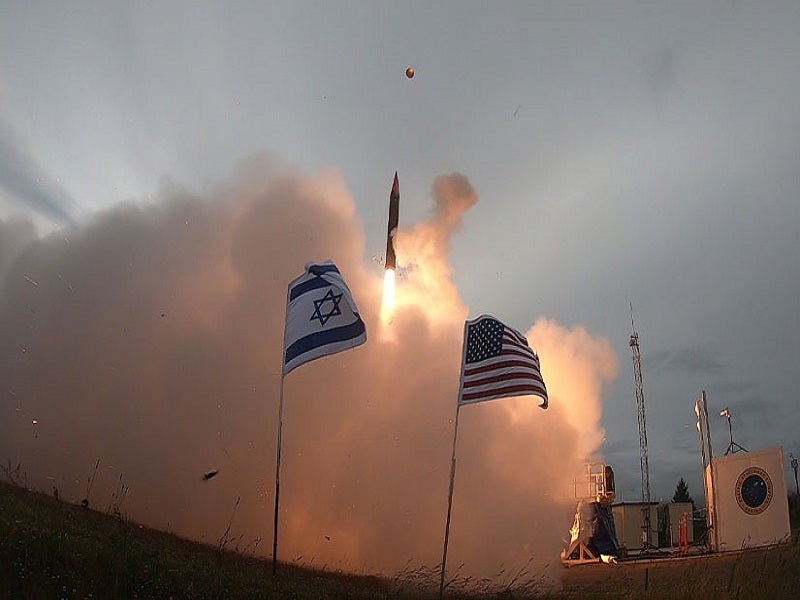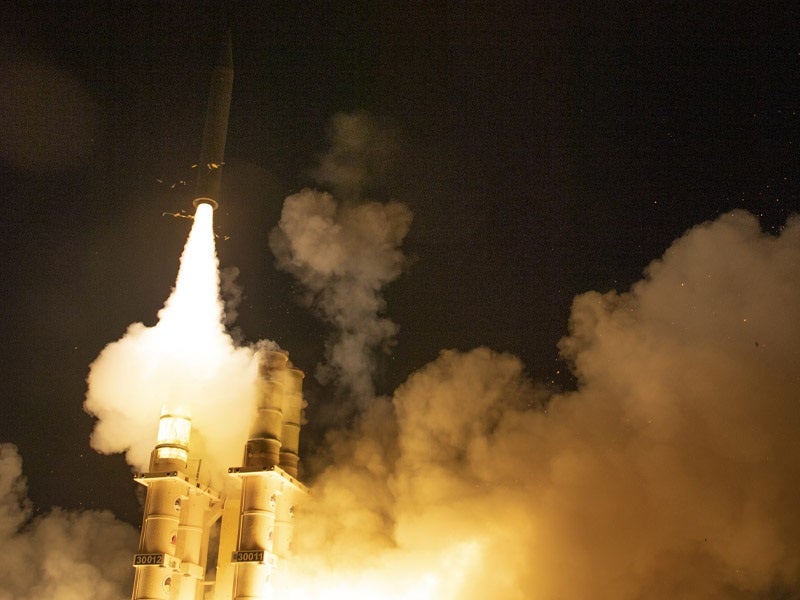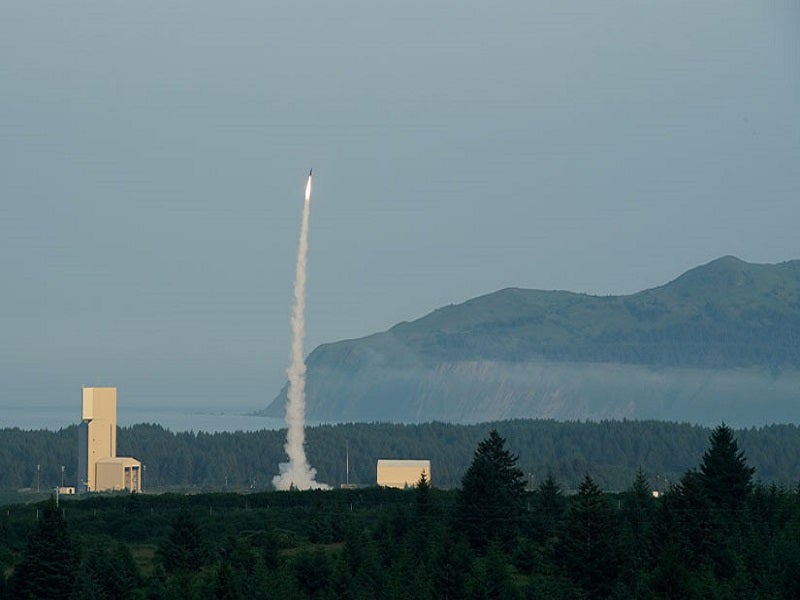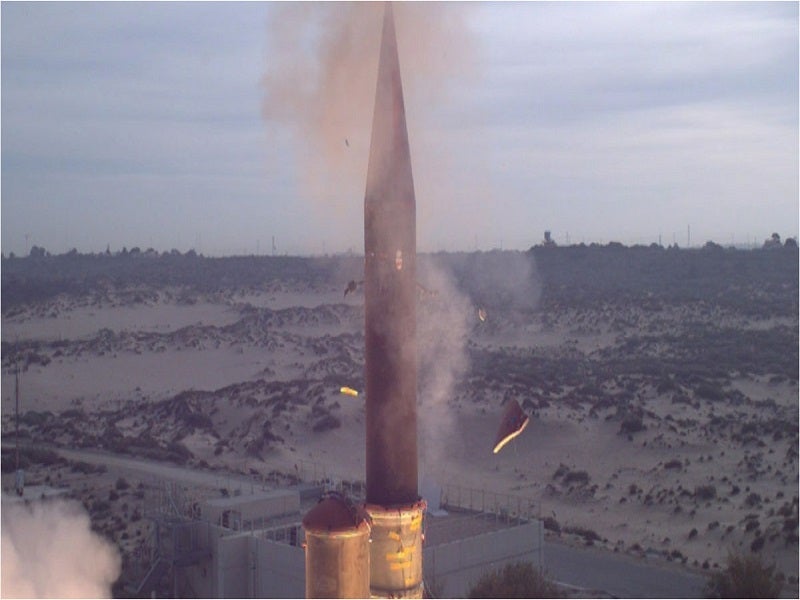Arrow 3 is an exo-atmospheric anti-ballistic missile defence system jointly developed and produced by Israel and the US for long-range threat engagement.
The Arrow 3 interceptor was co-developed by Boeing and Israel Aerospace Industries’ (IAI) MLM Division. It is part of Israel’s Arrow weapon system (AWS), a stand-alone anti-tactical ballistic missile defence system.
Arrow 3 is a key element of the country’s multi-layered defence missile array, which also includes the Arrow 2, David’s Sling, and the Iron Dome active defence systems. It was inducted into the Israeli Air Force in 2017.
Germany is planning to buy the Arrow 3 air defence system, reported Reuters.
Testing and development
The first successful flight test of the Arrow 3 interceptor was conducted in 2013. The second flight test was successfully completed by the Israel Ministry of Defense (MOD) and the US Missile Defense Agency (MDA) in January 2014. The Arrow 3 interceptor was launched from a test range in Israel and performed as per expectations before terminating over the Mediterranean Sea, as part of the test.
A flight test of the Arrow 3 weapons system was conducted at a test site in central Israel by the MDA and the Israel Missile Defense Organization (IMDO), part of the MOD, in February 2018.
The test was led by IAI, in collaboration with the Israeli Air Force, and supported by the MDA.
The IMDO and MDA completed a series of tests on Arrow-3 in Alaska, US, in July 2019. The interceptor successfully demonstrated hit-to-kill interceptions of high-altitude exo-atmospheric targets during the test campaign. The test also proved the system’s operational interoperability with the US AN/TPY-2 radar.
Stark Aerospace, the US-based subsidiary of IAI, delivered the first Arrow 3 missile canister in September 2018. Full production of the weapon system commenced in September 2019 under the co-production agreement between Israel and the US.
A successful flight test of the AWS and the Arrow 3 interceptor was conducted at a test site in central Israel in January 2022.
Arrow 3 design and features
Arrow 3 is designed to intercept ballistic missiles outside of the earth’s atmosphere. It features a compact and innovative design.
The system weighs about half of the Arrow 2 weapon system and provides greater speed and range.
It provides hypersonic capabilities and can defend a very large area, providing comprehensive defence of strategic sites and large populated areas. It can destroy long-range threats, including those carrying weapons of mass destruction, far away from the targets.
Arrow 3 provides high lethality against all types of theatre ballistic missiles (TBMs) and warheads. It can be integrated with the AWS battery comprising a ground-based radar, and a battle management system, launchers, and a launch control centre.
The missile system uses hit-to-kill technology to destroy incoming missiles. The missile is launched vertically and then the direction is changed towards the estimated interception point. The kill vehicle is launched once the hostile warhead is identified and the target is close enough.
Launcher details
The mobile and easy-to-transport launcher provides vertical hot launch capability from sealed canisters, with an omni-directional coverage. Each launcher has the capacity to hold six canisters. It can accommodate Arrow 3 and Arrow 2 interceptors.
The missile can be placed in a 21in vertical launch tube. The launcher provides fast reaction times to engage multiple ballistic missiles.
Propulsion and performance
The hypersonic weapon system features two solid propulsion stages, including a booster and a sustainer. It provides a range of 2,400km and can intercept threats at an altitude of 100km.
Radar and guidance system
The Arrow 3 system uses Elta’s Super Green Pine early warning and fire control radar, which operates in L-band. Elta is a subsidiary of IAI. The radar provides extended-range acquisition, as well as multi-target acquisition and tracking capabilities.
The radar can counter sensor outage and jamming issues through electronic counter-countermeasures (ECCM).
The high-resolution electro-optical sensor acquires the target for the kill vehicle to hit the target and destroy the warhead.
Battle management centre
The Citron Tree battle management and command, control, communication, and intelligence system/fire control centre serves as the control centre for data processing, threat assessment, and mission control.
The battle management system provides early warning, launch point estimation, and prediction of precise impact point.
The system features manual and fully automatic battle management modes, as well as man-machine interface. It provides the capability to handle multiple threats simultaneously.
The Arrow 3 weapon system continuously searches for threats. The battle management centre receives information acquired by radars about the incoming ballistic missiles and processes it, following which the interceptor is selected to destroy the hostile missiles.
Launch control centre
Located at the launch site, the Hazelnut Tree launch control centre (LCC) controls the missile launchers. It acts as an interface between the launchers and the fire control centre.
The Hazelnut Tree LCC features a fully automated battle management mode and full system redundancy for maximum system availability.
It is equipped with safety mechanisms to prevent accidental missile launches. The LCC also undertakes diagnosis and maintenance of the interceptor.
Contractors
Rafael, an Israeli defence technology company, is responsible for the design and development of the target, while Tomer provides rocket engines for the target ballistic missiles.
The Citron Tree battle management centre was developed by Elisra, a subsidiary of Elbit Systems.











